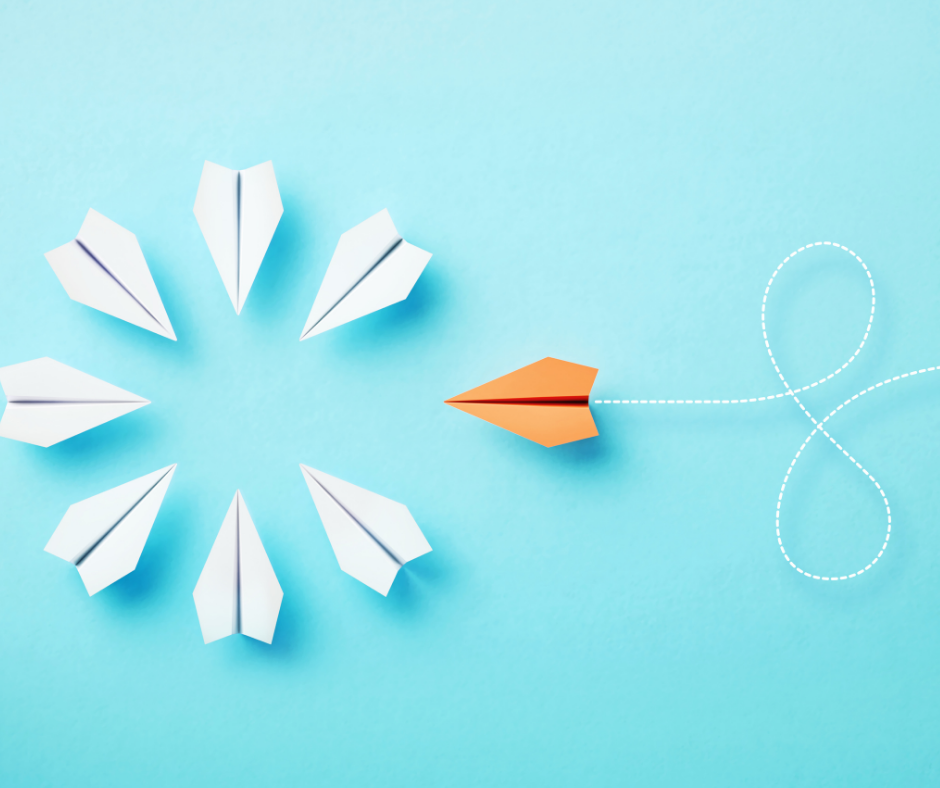7 Daily Habits Keeping You Stuck (Part 1)
Could your tiny daily habits - the seemingly insignificant - be sending you further away from success? Are any of these 7 daily habits keeping you stuck?
They say, “We are what we repeatedly do. Excellence is not an act but a habit.” When it comes to positive daily habits, this can elevate your success. But, with this same thinking in mind, invaluable - or worse, detrimental - daily habits can keep you stuck or even push you further away from success.
In his book, The Slight Edge, Jeff Olson proposes that every day you have a choice to master the mundane. Doing the things that are easy to do - but, equally as easy not to do. An error in choice sends you closer to failure, and at first, goes unnoticed. Every day you are casting a vote. Through your choices, you are deciding who your future self will be.
Based on my own experience experimenting and research, in this blog, I’m sharing what I believe are the daily habits that keep you stuck. This is Part 1 of my two-part blog on this particular topic, and the latest instalment in my habit series.
Habit #1: Social media scrolling
Market research company GWI estimates the typical working-age internet user spends 2.5 hours a day on social media.
Based on these numbers, let’s extend this:
2.5 hours of social media per day
= Approximately 17.5 hours per week
= 910 hours per year
= 23 (40-hour) work-week equivalents per year.
By this estimate, that means we scroll on social media for the equivalent of nearly half a working year.
Imagine if you spent 23 working weeks on a side project. What could you achieve?
Habit #2: Watching too much low-value TV
Most Australian and US reports estimate the average person watches 2.5-3 hours of television per day.
Let’s extend these numbers again:
2.5-3 hours of TV per day
= 17.5-21 hours of TV per week
= 910-1,092 hours of TV per year
= 23-27 40-hour work-week equivalents per year
The human brain processes tens of thousands of messages per day. Understandably, we can experience cognitive overload. And feel like we need “do nothing” downtime. But, consider switching to more high-value viewing. Watch YouTube videos or documentaries in your field of interest.
Or, turn off the TV altogether and pick up a book.
As shared in my previous blog, on Life-changing Habits and Hobbies for Personal Development, University of Sussex research has compared the knowledge of TV watchers to that of readers. Readers are said to have more knowledge and better analytical skills, improving their judgement and problem-solving skills. Books, magazines and written text also use more unique words than television. This helps improve your vocabulary and communication skills.
Habit #3: Being consumed by the news
Growing up, my family watched the news every morning and night, so I understand how this can become part of your routine. Plus, in more recent years, world events glued the globe to screens for the latest updates.
Now, ask yourself, how much time per day do you spend consuming the news? Maybe once in the morning and at night? How many minutes per day and week is that? How much is it moving your life forward? Remember the news is designed primarily for shock factor over feel-good or educational value.
I used to think if I didn’t watch the news, I would be ignorant of the world around me locally, nationally and globally. I quickly realised, that thanks to social media and conversations with friends and family, you’ll always know what’s in the news regardless. And there are more effective ways to gain knowledge.
For that “in the know” feeling, consider switching to more useful “latest news”. I personally listen to podcasts and watch YouTube in my niche, so I get the latest industry news. These naturally touch on world events in a way that’s relevant to me.
Habit #4: Overwhelming your first brain
David Allen in his book, Getting Things Done, proposes that stress comes from the things in your head that aren’t yet in a helpful system ready for actioning.
Tiago Forte expanded further on this in his book Building a Second Brain. Proposing the ‘Second Brain’ is a body of knowledge external to your physical brain. For example, the Notes app on your phone or what was traditionally known as a ‘commonplace book’.
Forte believes that the time you first encounter information or an idea isn’t when you most need it. So, take what’s in your physical brain and move it into your second brain system. Your future self will thank you.
Habit #5: Poor brain food
As brain personal trainer Jim Kwik advocates in his book Limitless, don’t forget to fuel your body’s second brain - your gut.
Think of both your brains as your precious cars. If you had the choice between filling it with low-quality fuel or a premium product, what would you choose?
Research shows in the walls of your digestive system lies your enteric nervous system. It’s lined with hundreds of millions of neurons - just think about the term ‘gut feeling’. So, if you're trusting your gut to think and perform for you, it needs the right fuel. Ensure you treat your second brain to a nutritious diet of brain food.
Habit #6: Not moving your body
You’ll struggle to solve any of your problems while sitting on the couch. Instead, move your body. One of my favourite sayings is:
“A body in motion stays in motion.”
Take walking for example. A 2014 Stanford study demonstrated the benefits of walking for creativity and problem-solving. Researchers found creativity increased by 60% when compared to sitting. This resulted from walks just 5-16 minutes long. And worked for walks both indoors and outdoors.
University of Sussex research also showed walking contributed to a 42% reduction in stress. It releases endorphins such as dopamine and helps build empathy. It also moves your brain wave frequency from the beta region to the high theta range - the same frequency entered during meditation.
Another example is yoga. Harvard University research used MRI scans and brain imaging techniques on practitioners and non-practitioners of yoga. It showed that those who practised the exercise regularly had a thicker cerebral cortex (responsible for information processing) and hippocampus (involved in learning and memory) compared with non-practitioners. It is also said to improve mood.
Habit #7: Low-value downtime
In his book Digital Minimalism, Cal Newport discusses the idea of ‘low-value’ downtime. This might be your TV watching and social media among other things. What is your low-value leisure time activity?
Consider the switch to high-value leisure-time hobbies instead.
Adam Grant in his book, Originals, champions the importance of high-value hobbies. Research shows having them is a defining trait among entrepreneurs and inventors. Those who start businesses were more likely to have hobbies that involved drawing, painting, architecture, sculpture and literature.
“People who are open to new ways of looking at science and business also tend to be fascinated by the expression of ideas and emotions through images, sounds and words.”
Galileo demonstrates this concept. When he made the remarkable discovery of mountains on the moon, it wasn’t his telescope that found this. It didn’t have the magnifying power. Instead, he recognised the zig-zag pattern that separated the light and dark areas of the moon. Galileo had artistic training in a technique called chiaroscuro. It focuses on light and shade.
For example, play an instrument. Research has shown that playing an instrument changes your brain’s structure. This includes increasing the grey matter volume in various regions. It also improves the connections between the left and right hemispheres of the brain. Music also integrates the senses of vision, hearing and touch, with fine movements. And this can have a lasting impact. I keep this in mind every time I sit down at the piano.
Don’t let your seemingly insignificant daily habits keep you stuck, and stand between you and your personal brand vision.
So, if you took a close look at your daily routine, what are the tiny habits keeping you stuck?
P.S. Stay tuned for Part 2 for another 7 habits that might be keeping you stuck and for more in this habits series.





